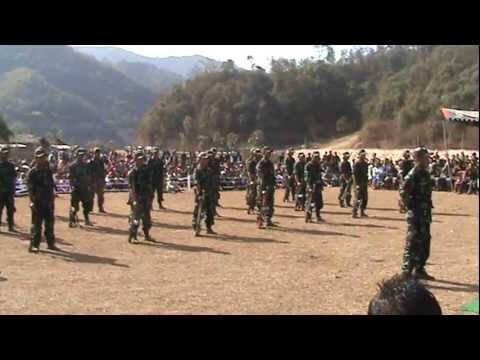Diphu August 1: The exploitation of Petroleum from the oil bearing at strata in Upper Assam one day would change the course of war in the China-Burma-India theatre of the Second World War, Assam’s 0il industry was the first and the oldest one in Asia.
The Forgotten Oil Pipeline
After the debacle of Burma against the advancing Japanese forces, the British had to evacuate, destroying the petroleum infrastructure as they left. The hope lay in the refinery of the Assam Oil Company as a firm back up.
As the works of the Stillwell Road progressed, the Chindwin guerillas kept the Burmese flanks busy. An oil pipeline of 8″ diameter followed to where the supplies of vehicle and aviation fuel were most needed.
Nobody, unfortunately, talks about this pipeline anymore. After independence, barely a decade went by; the Assamese milieu became infuriated with the issue of draining out a huge oil supply via the Duliajan-Barauni crude oil pipeline.
This pipeline was, in its time, the longest crude oil pipeline in Asia. Even a pipeline division with an airborne surveillance platform was created by Oil India Limited.
Three Bell G5 Helicopters with their characteristic ‘bubble canopy’ of the Korean war vintage, owned by the Bharat Air were pressed into service.

Regional Geopolitics of N E India and Petroleum. image from youtube screenshot.
Development Slowed By Unrest
The need for the domestically based refinery grew and the public of Assam were given a sop by installing a .75million ton capacity oil refinery near Guwahati. During this period, the state of Assam was marked by unrest over the Refinery issue as well that of the Assamese language as a medium of instruction.
The Naga insurgency took root by the mid 1950’s. It was followed by a lot of forced occupation of the Reserved Forest land by the miscreants of the neighboring state.
“It can be surmised that the Nagas are not interested in what is above the ground; but more keen on what is to be found below.” wrote one officer of those bygone eras to his Deputy commissioner with no-nonsense candor.
He belonged to the coveted service called Assam Civil Service. The presence of tertiary formations with crude petroleum oil bearing strata around the political boundary of Nagaland possibly was a raison d’etre behind the occupationist tendency of the insurgent groups.
Given oil as a resource to fuel insurgency, this could have had the greatest impact on the territorial integrity of North East India as a whole.
Oil Unsettled the Indian Economy
Rising prices of petroleum crude globally sent the Indian economy into a tizzy. The ONGC (Oil and Natural Gas Company of India) and the OIL (Oil India Limited) were pressed for more exploratory models and that indeed took time.
The overharvesting of the petroleum oil wells made their majority quite unproductive in upper Assam. In the meantime, oil was struck in the Bombay High and Ankleshwar in Gujarat. The Mahanadi exploration was a failure.
Soon, succumbing to the market pressure, the oil wells of the Ankleshwar oil fields had to be given tertiary recovery treatment. However, the oil was struck at Kharsang in Arunachal Pradesh and also in Nagaland.
The Oil and Natural Gas Commission personnel had to evaluate Nagaland infrastructures on the face of a massed threat from the public which behaved very irately with the ONGC employees most of whom were working on the oil rigs.
Resources Fuel Insurgency, Fighting
A three days long medium-low intensity conflict of arms took place in the Nagaland-Assam border in 2014 July in the District of Karbi Anglong.
The armed skirmish cost the life of a forest employee, though engaged as daily wage earner to demolish the encroachment. But the unofficial tally of dead numbered twenty two on the other side manned by Naga miscreants.
It became more than clear that the oil reservoirs were the bone of contention for the aggressive maneuvers in the Assam-Nagaland border.
A yearlong geo-tectonic survey revealed the presence of oil bearing strata in the Doldoli reserve forest where the fighting had taken place. This was much later after 2014. The data was analyzed by the international giant Schlumberger.
Conservation of natural resources and nature has become the most dangerous occupation in the globe today; the reason is not too far to seek.
All the innocuous resources around us can fuel extremism and anti national acts; if they fall on the wrong hands. Conservation has become a covert war.




